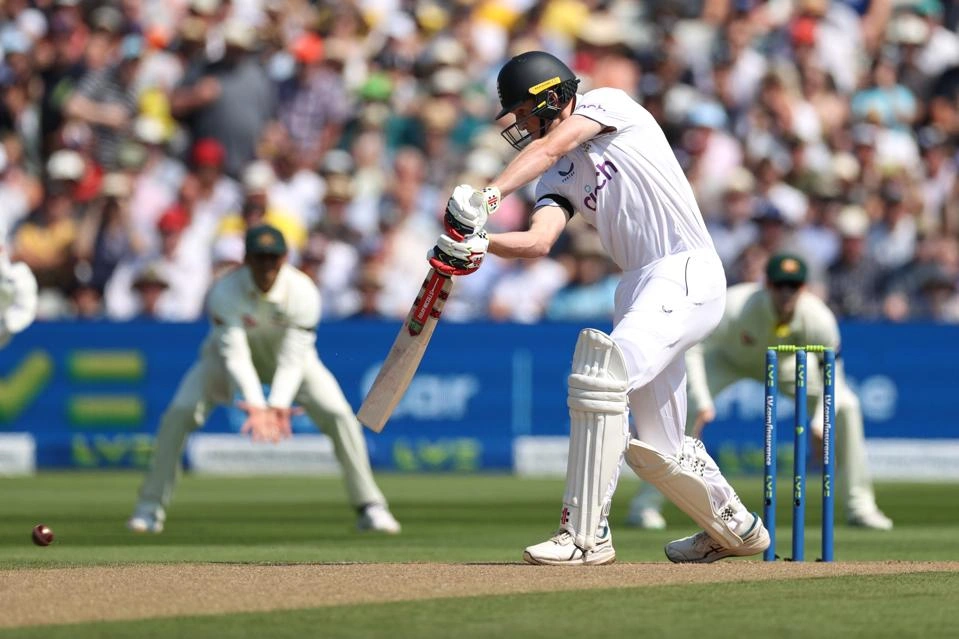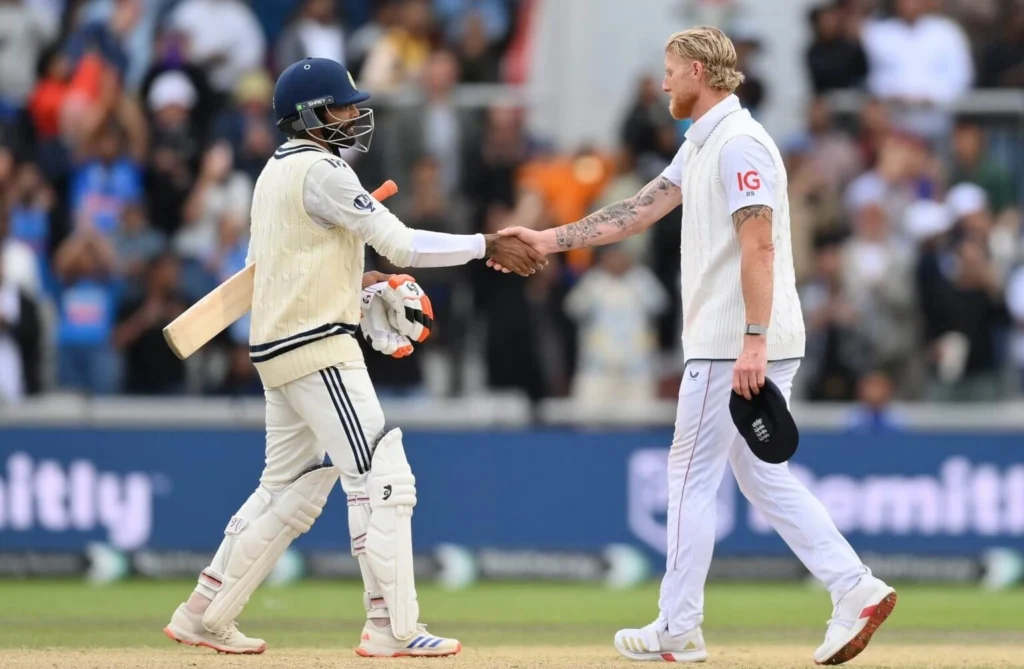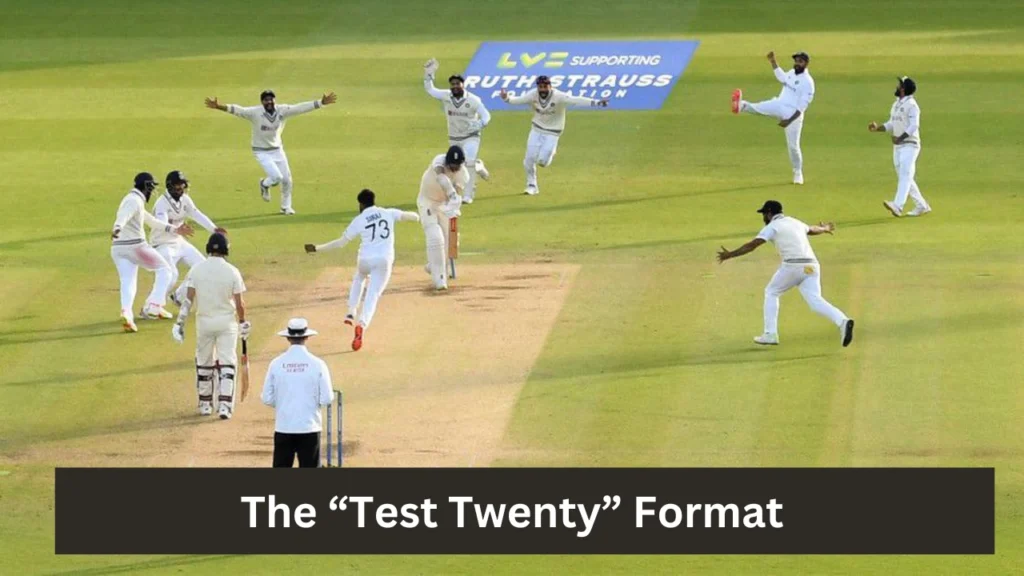The “Test Twenty” Format
Cricket, often hailed as the gentleman’s game, has evolved remarkably over the centuries. From timeless Tests to the flamboyant Twenty20s, each format has contributed uniquely to the sport’s rich tapestry. However, in recent years, the ever tightening schedules, changing viewer habits, and growing commercial demands have created a gap between the traditional and the modern.
The five day Test match; once the crown jewel of cricket faces declining attendance and waning appeal among younger audiences who favor the fast paced thrills of limited overs cricket. In response to this shifting landscape, cricket administrators and innovators have proposed a groundbreaking new format: the “Test Twenty.”
This experimental format seeks to blend the tactical depth and narrative drama of Test cricket with the high octane intensity of T20 matches. Played over a single day and totaling 80 overs, the Test Twenty offers a condensed yet strategic experience, where each team bats twice in 20 over innings. This means that while the duration is significantly shorter, the spirit of Test cricket; built around multiple innings, momentum swings, and the possibility of a draw; remains intact.
Structure: A Fusion of Tradition and Modernity

The Test Twenty is designed to last approximately seven to eight hours, similar to a One Day International (ODI), but its internal structure is far more dynamic. Here’s how it works:
- Total Duration: 80 overs (40 overs per team).
- Innings Format: Each team bats twice, with each innings limited to 20 overs.
- Match Flow: Team A bats for 20 overs → Team B bats for 20 overs → Team A bats for another 20 overs → Team B concludes with its final 20 overs.
- Results: The match can still end in a win, loss, draw, or tie, preserving one of the defining elements of Test cricket; the draw, a result almost alien to T20 and ODI formats.
This structure encourages teams to adopt strategic flexibility. Unlike T20s, where every over counts in a single innings, the Test Twenty allows teams to play the long game; planning across two innings, managing bowlers’ fatigue, and setting up tactical declarations if necessary.
However, because of the tight 20 over limit per innings, batters must balance traditional patience with modern aggression, creating a thrilling hybrid of cricketing philosophies.
Why Introduce the Test Twenty?
The motivation behind this innovation stems from a desire to revive the essence of Test cricket while adapting to the modern audience’s preferences. Cricket’s governing bodies and broadcasters are acutely aware of the sport’s evolving demographics.
With streaming platforms, social media highlights, and shorter attention spans dominating the entertainment landscape, a five day match can appear daunting to new fans. The Test Twenty, therefore, is envisioned as a gateway format; an accessible introduction to the complexities and beauty of red ball cricket, without demanding a multi day commitment.
Additionally, it addresses logistical challenges. Hosting a full Test match requires extensive time, resources, and venue availability. A single day format reduces costs and allows smaller cricketing nations or emerging cricket boards to participate in multi innings cricket without the financial burden of a five day affair. This could democratize Test style cricket, expanding its reach beyond traditional strongholds.
Gameplay Dynamics: Strategy in Fast Forward

Image: @gettyimages
The Test Twenty’s structure demands a rethinking of conventional tactics. While the 20 over innings limit encourages quick scoring, the dual innings framework brings a nuanced layer of strategy.
1. Batting Strategy
Batsmen will need to master adaptability. In the first innings, the focus may be on laying a foundation and conserving wickets, knowing that a second opportunity awaits. The second innings, however, could require aggression to set a challenging total or chase down a target quickly.
Openers must navigate fresh bowlers twice, while middle order players will shoulder the dual responsibility of consolidation and acceleration. Unlike T20s, where the mindset is “hit from ball one,” Test Twenty batters must think two steps ahead; balancing risk and reward while considering the cumulative nature of two innings.
2. Bowling Strategy
Bowlers, particularly fast bowlers, will find the shorter bursts of play favorable. With each team batting only 20 overs at a time, the workload becomes more manageable, allowing bowlers to attack with intensity. Captains might rotate their best bowlers more strategically, knowing they will have multiple opportunities to exploit conditions throughout the day. Spin bowlers, too, could play pivotal roles, especially as pitches wear down slightly across four innings.
3. Fielding and Tactics
Given the compressed time frame, fielding sides will emphasize efficiency; quick over rates, sharp catching, and aggressive field placements. Every run saved or chance taken could dramatically alter the momentum of the game, especially with limited overs per innings.
Preserving the Spirit of Test Cricket

What makes the Test Twenty particularly intriguing is its commitment to preserving the traditional outcomes and integrity of Test cricket. Unlike limited overs matches, where one team must emerge victorious, the Test Twenty can still end in a draw, reflecting the unpredictable and tactical essence that defines the longer format. Factors such as weather interruptions, run rate management, and defensive batting late in the day could all influence the result.
This element of unpredictability ensures that the format does not reduce cricket to mere entertainment; it remains a contest of endurance, skill, and intellect. Fans of classic Test battles can still savor sessions where strategy outweighs spectacle, while newer audiences enjoy the continuous action and pace.
Potential Impact on Global Cricket

If successfully implemented, the Test Twenty could revolutionize domestic and international cricket. Here are some potential impacts:
- Revitalization of Test Cricket: It could reignite interest in red ball techniques, encouraging young players to develop skills that apply to both long and short formats.
- Enhanced Scheduling Flexibility: Boards could host more “Test style” matches within tighter calendars, perhaps as weekend spectacles or special series.
- Commercial Appeal: With its single day duration, the format fits perfectly into prime time broadcast slots, attracting sponsors and audiences seeking both depth and brevity.
- Grassroots and Associate Benefits: Emerging nations could gain experience in multi innings cricket without committing to full length Tests, broadening global competitiveness.
Challenges and Criticisms

Despite its promise, the Test Twenty will inevitably face scrutiny from purists and traditionalists. Critics may argue that it dilutes the sanctity of the Test match, reducing its grandeur to a commercial experiment. Others may question whether 20 over innings can truly replicate the ebb and flow that make five day Tests so compelling. There will also be logistical challenges; pitch preparation, scheduling, and maintaining the balance between bat and ball over four innings within one day.
However, cricket’s history shows that innovation often meets resistance before acceptance. The same skepticism surrounded One Day Internationals in the 1970s and the T20 format in the 2000s; both of which ultimately transformed the sport. The Test Twenty could follow a similar trajectory, carving out its own niche within the cricketing ecosystem.
Final Thoughts: A Bridge Between Eras
The Test Twenty stands as a bold experiment at the crossroads of cricket’s past and future. It honors the traditions of Test cricket; the art of patience, the story of multiple innings, and the beauty of drawn battles; while embracing the modern audience’s craving for speed and excitement. By condensing the essence of a five day epic into a single, intense day, it offers something unprecedented: a short match with a long form soul.
If embraced thoughtfully, the Test Twenty could become more than just another format; it could be a bridge uniting generations of fans, a stage where history and innovation coexist, and a fresh chapter in cricket’s timeless journey.
Also Read: FIDE World Chess Cup 2025 Renamed After Viswanathan Anand: A Tribute to India’s Chess Legend.



